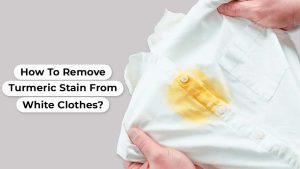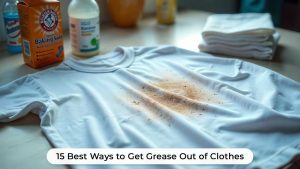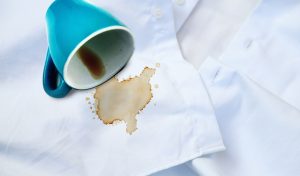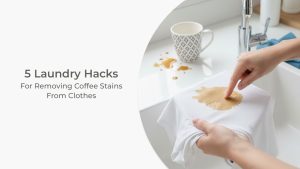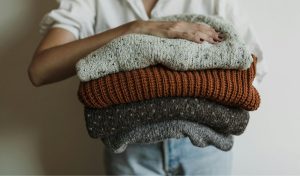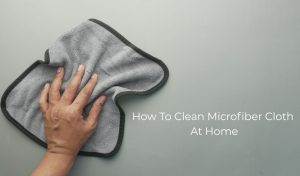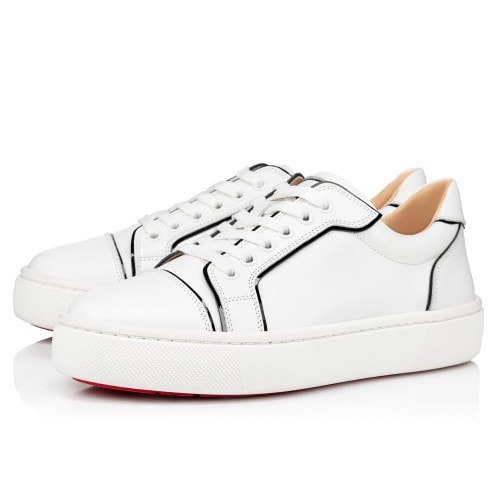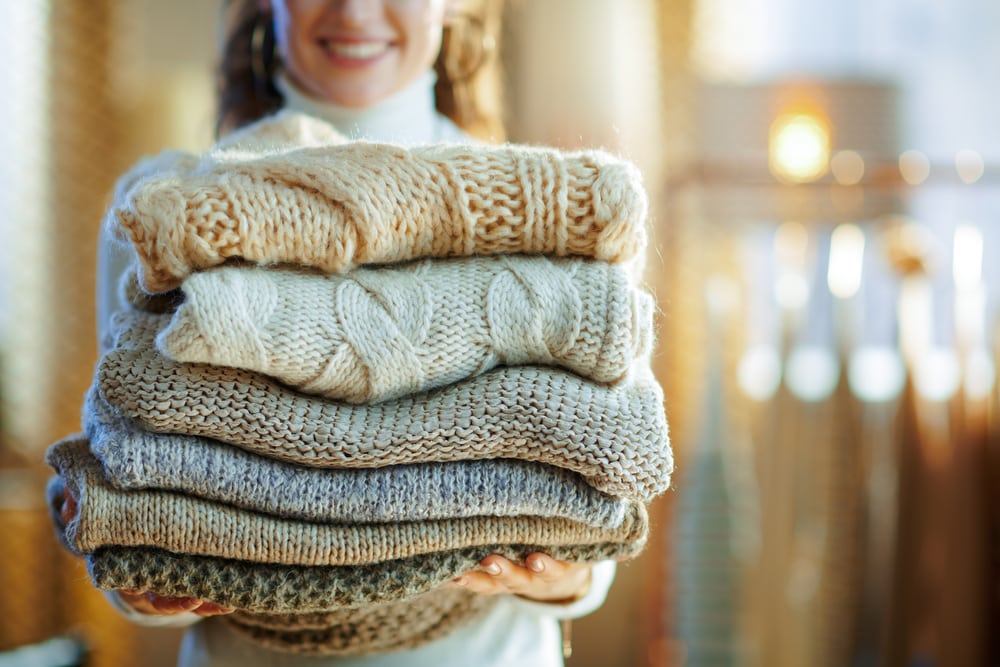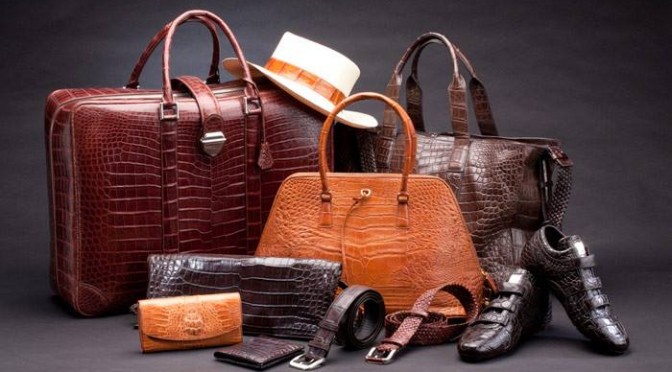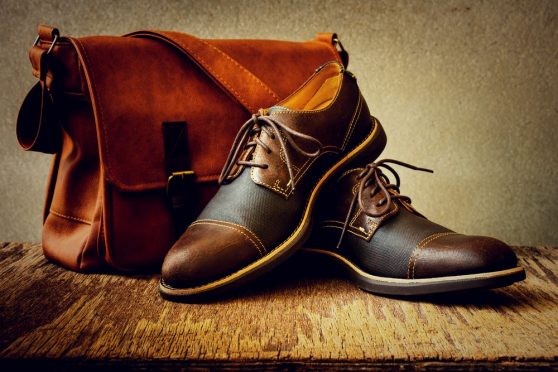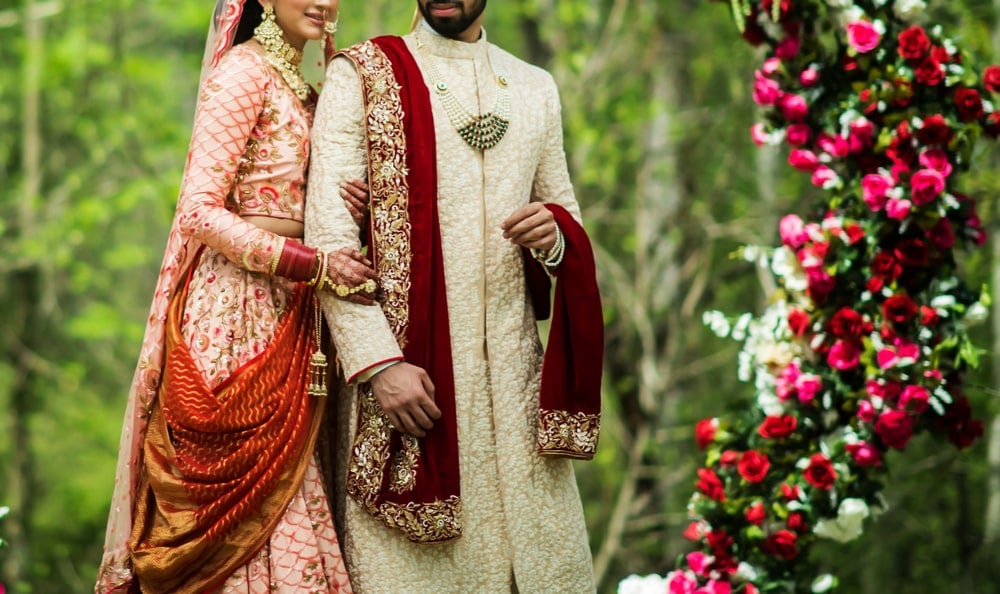Which is the best steam iron or a...
Read More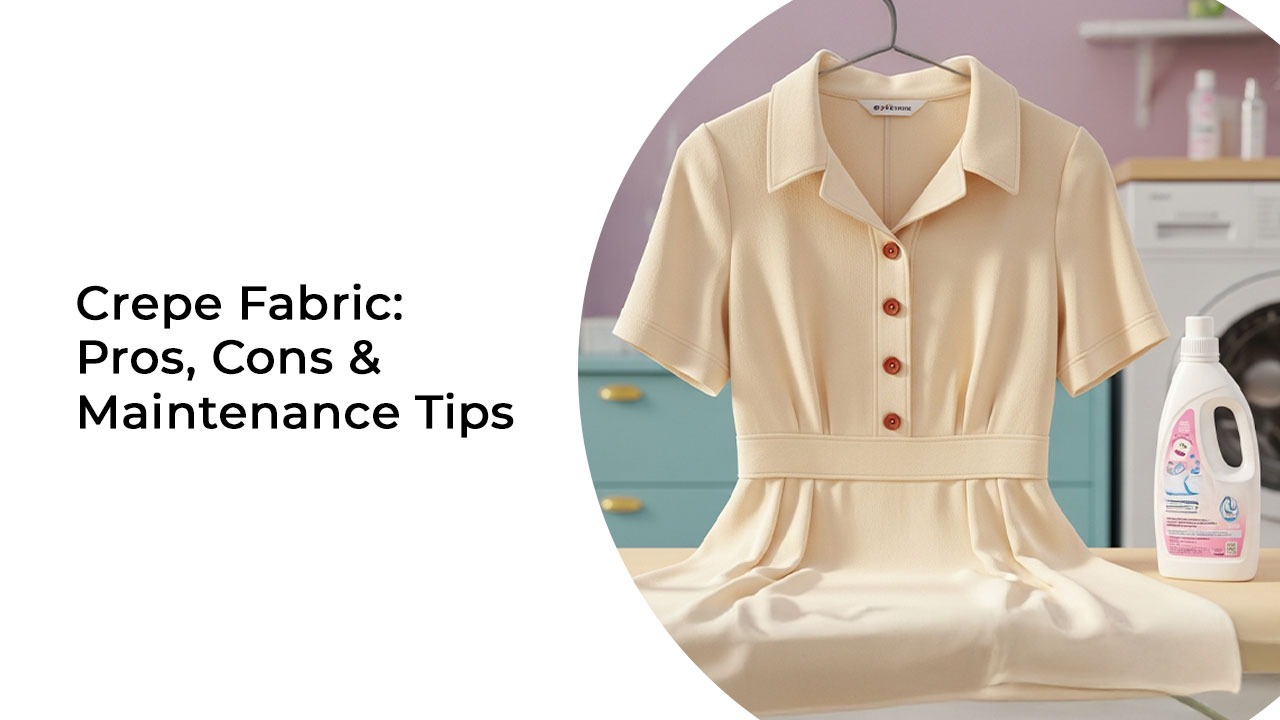
Table of Contents
Selecting the right fabric for your wardrobe or home comes down to comfort, endurance, and visual appeal. Among the many contenders, crepe fabric continues to command attention. Its signature texture & a gentle feel provide a soft face that sways beautifully, and the fabric appears in everything from bridal gowns and draped sarees to chic blazers and ever-so-cozy cushions.
So the key question persists for most shoppers: “Crepe Fabric Is Good Or Bad?” Deciding requires information on what is crepe fabric and what distinguishes it from the crowd. This article breaks down the crepe fabric meaning, properties, strengths and weaknesses, and its credentials for summer wear. By the final paragraph, you will know whether crepe deserves a permanent spot in your closet or your linen cupboard.
Read More: Decoding Guide To Washing Your Clothes Right
What Is Crepe Fabric?
Crepe fabric refers to a lightweight weave celebrated for its natural crinkle, which refracts light in soft ripples and enables a fluid, inviting drape. Its airy surface is an optical trick. Neither the fabric itself nor the yarn is severely crinkled. The clever use of twist yarn in fibres like silk, polyester, or a wool blend creates this matte, slightly textured face without bulk.
Now, it comes to the crepe fabric meaning. The word “crepe,” borrowed from the French crêpe, literally translates as “curled” or “wrinkled”—a fitting label for this soft, crinkled textile.
Get spotless clothes at your doorstep!
Types of Crepe Fabric
Although the word alone suggests a single aesthetic, it actually names a family of fabrics, each with its personality:
- Silk Crepe —soft, opulent, and delicate, this is the gownmaker’s favorite.
- Wool Crepe —medium-weight and flannel-like inside, it is the perfect balance of warmth for autumn dresses.
- Polyester Crepe —an inexpensive hero with a stubborn aversion to wrinkles, it thrives in everyday workwear.
- Georgette Crepe —the thinnest cousin, sheer and slightly scratch-less, survives July in floating kimonos and flared evening overlays.
The spectrum of drape and depth allows crepe to remain a universal collaborator from bridal to bedding.
Characteristics of Crepe Fabric
Crepe speaks through its texture and mobility; a tactile resume of its signature traits would reference these essential features:
1. Texture and Drape Qualities
Crepe’s signature appeal lies in its textured yet liquid surface. So, the glow is always understated. When cut, crepe ribbons around the body, letting skirts and sleeves swing in effortless arcs. No surprise it’s the go-to for evening gowns, sarees, and any outfit where stately movement is the goal.
2. Lightweight vs. Heavy Crepe Variants
Crepe loves to play with weight. A featherweight georgette crepe consoles the skin on afternoons, combining cooling sheerness with gentle opacity. At the other end, wool crepe (heftier and subtly textured) complements tailored blazers, pencil skirts, and any winter line-up needing sturdy sophistication. Opt for lightness or gravity. The finish is always lush.
3. Breathability and Comfort
The breathability equation lies in fiber choice. Silk crepe’s satin side on the skin encourages constant, gentle drafts. The crible in cotton crepe additionally pulls moisture away without the heavy wilting that other fabrics tolerate. Polyester crepe, while astonishingly crease-resistant and strikingly durable, is casual with airflow, courting calm in the presence of AC and cool breezes yet trapping a little warmth in tropical moments.
4. Wrinkle Resistance and Low Maintenance
The twisted yarns and naturally crinkled surface, crepe fabric is wrinkle-resistant & never seems to mind a long day in a suitcase. The soft texture bounces back after a day stuffed in a carry-on, so you can slip on a stylish dress, blazer, or pants, and walk right out the door.
Is crepe fabric good for summer?
When temperatures rise, picking the right material can dramatically affect how comfortably you feel in your clothes. A truly summer-ready fabric needs to be featherlight, let air circulate, and wick away moisture quickly. So where does crepe fit into all that?
Breathability and Moisture Control
For a fabric to earn its stripes in summer, it has to whisk away sweat, let cool breezes in, and feel barely there against the skin. Crepe fabric generally nails the lightweight and draping criteria, but the moisture-handling and air permeability hinge on the specific fiber content.
Natural Crepe vs. Synthetic Crepe
Crepe comes in various blends, and how it performs in the heat can vary considerably. Pure silk crepe and cotton crepe offer wearing ease, moisture-wicking, and natural breathability, which are big pluses when the humidity is high. The polyester versions caught on for their crease-free finishes, but the trade-off is reduced airflow; the air that does circulate often feels warm rather than cooling.
Get Shiny and spotless saree at home
Why is Crepe Popular in Summer Clothing?
Crepe is a gentle material, and drape gives movement even to the lightest layers, which is why you see it in flowy sundresses, lightweight sarees, breezy blouses, and easy-wrapping scarves. The gently textured surface offers a touch of visual interest, and the natural overhang of fabric keeps skin from clinging, allowing you to stay stylish and cool in the heat. Weather permitting, those remain the top reasons to reach for a crepe piece in the summer wardrobe.
Flat 20% off on 1st order-
schedule free pick up
When Crepe Might Feel Uncomfortable?
When you step outside on a day when the air is thick and the temperature is pushing the seams of your outfit, the lightweight appeal of synthetic crepe fabrics can turn from a breeze to a sauna.
Beneath those charming drapes, the fibers often hold onto moisture, and suddenly the fabric shifts from silky to clingy. Overall, crepe fabric is good for summer. Natural variants like silk or cotton crepe excel in summer, adding a cool, soft touch, while synthetics can play a different role. In extreme heat, day-to-day wear in tropical climates might trigger polyester crepe’s tendency to cling and overheat.
Advantages of Crepe Fabric
Across continents, crepe is woven into the working wardrobes and stores due to the multiple benefits of crepe fabric. Home décor, bridal veils, gowns, and play-ready outfits, the benefits of crepe fabric are numerous. Here are the key advantages of crepe fabric
1. Elegant Drape and Stylish Look
Crepe fabric stands out for its soft yet elegant drape. When light hits that understated texture, ready-made evening gowns, sarees, and formal wear suddenly appear to be made from liquid luxury, compelling you to move so that the edges sway just so.
2. Lightweight and Flowy Nature
Pick up any piece made from crepe and you’ll be surprised that it is actually fabric. Most crepe are lightweight and airy, you’ll barely remember the fabric on your shoulders.
3. Wrinkle Resistance and Easy Maintenance
Wrinkles? They scatter. The graceful twist and tight construction of crepe’s yarns scatter them at the micro level. Crepe fabric is wrinkle-resistant. Drape a dress, hang a scarf, roll a skirt into a suitcase, and every piece laughs at stubborn creases.
4. Luxury and Affordable Options
From ethereal silk crepe that whispers luxury crepe fabrics to polyester crepe that laughs at everyday stains, the family of crepes accommodates every buyer.
5. Versatile Uses in Fashion and Décor
Crepe is no longer simply a dressmaker’s fabric. It’s the same lightweight, rippled textile that slips into dresses, sarees, blouses, and trousers, yet it also drapes beautifully in home decor.
Limitations of Crepe Fabric
Crepe fabric, while celebrated for its beautiful drape and texture, does have some limitations that are worth considering before use. Here are the disadvantages of crepe fabric that shoppers and makers alike should keep in mind:
1. Delicate and Requires Special Care
Natural silk crepe offers luxurious softness, yet it is also one of the most delicate options. Machine washing or aggressive tumble drying can permanently alter its shape and lovely texture, so most silk crepe pieces will demand hand washing or dry cleaning.
2. Synthetic Crepe May Trap Heat
Poly or rayon crepe may offer good visuals at a lower price, but the breathability that naturally derived fibers offer is largely absent in these blends. The result is that these synthetics can seal in body heat and perspiration, making a garment uncomfortably clingy in warm or humid weather.
3. Durability Issues
Any crepe, be it silk, rayon, or a polyester blend, is best at casual elegance, not always durable for rough use. Those attending a formal event will appreciate the fabric in a flowing evening gown, but not hope to wear it in a daily routine.
Crepe Fabric vs. Other Fabrics
Crepe holds its own in textile comparisons thanks to a few core attributes.
Crepe vs. cotton: Cotton wins on breathability and moisture wicking, yet crepe has a superior fluid silhouette and does not have a wrinkle attitude.
Crepe vs. linen: Linen feels cool & fresh when the sun blazes, but crepe keeps its character with a polished, controlled movement.
Crepe vs. silk: Both radiate chic, but silk skims the higher end of fancy, while crepe, especially in health-minded blends, offers upscale flair without the sticker shock.
Crepe vs. blended polyester: a polyester crepe survives seasons of wear without the designer price, though ventilation takes a hit.
Find Crepe material is good or bad?
Whether crepe fabric is good or bad comes down to a couple of key questions: which crepe you have in your hands and where you plan to wear it. If you’re running your fingers over a natural crepe fabric, say fine silk or soft cotton, expect breathable elegance that glides through summer evenings. Handle it gently, though natural fibers have a soft spot for special care.
They’re budget-friendly, wrinkle-resistant, and stand up to embraces from an overstuffed suitcase. Although in a sticky breeze, they won’t let your skin exhale. For occasional wear, daily outfits, home décor, or a pair of tailored cushion covers, crepe offers versatility. Overall, crepe fabric is neither entirely good nor bad. The smart move is to let your plans and a swatch test will decide.
Care Tips for Crepe Fabric
Your crepe garment’s care routine depends on its fiber. Pure silk crepe is tender, so dry-cleaning is the safest option. Cotton or polyester crepe variants tolerate gentle hand or machine-washing. Always choose a mild detergent and cold water. Skip wringing. Instead, press out water softly and let the piece dry flat, away from sunlight, to keep the signature drape intact.
Light steam is more preferable than direct heat. Store garments folded or on softly padded hangers to guard the lines. At-home upkeep is handy, yet it risks loss of texture and possible shrinkage. For peace of mind, let the experts at Tumbledry professionally refresh your crepe, extending its life without fuss.
Conclusion: Is Crepe Fabric Good or Bad?
Is crepe fabric good or bad? The answer depends on the version (silk or polyester), your climate, and how you will use the garment. Natural crepe fabrics, woven from silk or lightweight cotton. They are breathable, great for everyday movement, and drape beautifully.
Conversely, synthetic crepe-like polyester comes with a low price tag, resists the urge to crease, and finds its way onto store racks season after season, so it’s a no-brainer for a weekday wardrobe. However, it becomes a more clingy fit when the air gets humid and you’re searching for a breeze.
In the bigger picture, crepe manages to be both posh and practical. Overall, crepe fabric strikes a balance between elegance and functionality. Whether you’re looking for flowy dresses, chic blouses, sarees, or even stylish home décor, crepe provides plenty of versatility.
Disclaimer: The opinions expressed in this article are those of the author. They do not necessarily purport to reflect the values or views of Tumbledry.
15 Best Ways to Get Grease Out of
In this blog, we will be covering the...
Read MoreHow To Remove Tea Stains From Clothes
Can’t say “No” to a cup of tea?...
Read MoreTop 30 Best Women Clothing Brands In India
Want to explore top 30 women clothing brands...
Read More5 Laundry Hacks for Removing Coffee Stains From
Many people end up losing their favorite garment...
Read MoreBest Ways to Use Vitamin C in Laundry
Don't let stains ruin your favorite clothes! Ever...
Read MoreHow to Keep Your Sweaters Soft and Fluffy:
Buying blazer for boys is not a cake...
Read MoreHow To Remove Slime From Clothes
Playing with slime is among the favorite activity...
Read MoreHow To Clean Microfiber Cloth At Home
We all know that microfiber clothes are very...
Read More10 Best Traditional Engagement Dress For Couples In
Wedding season is not so far and people...
Read More
